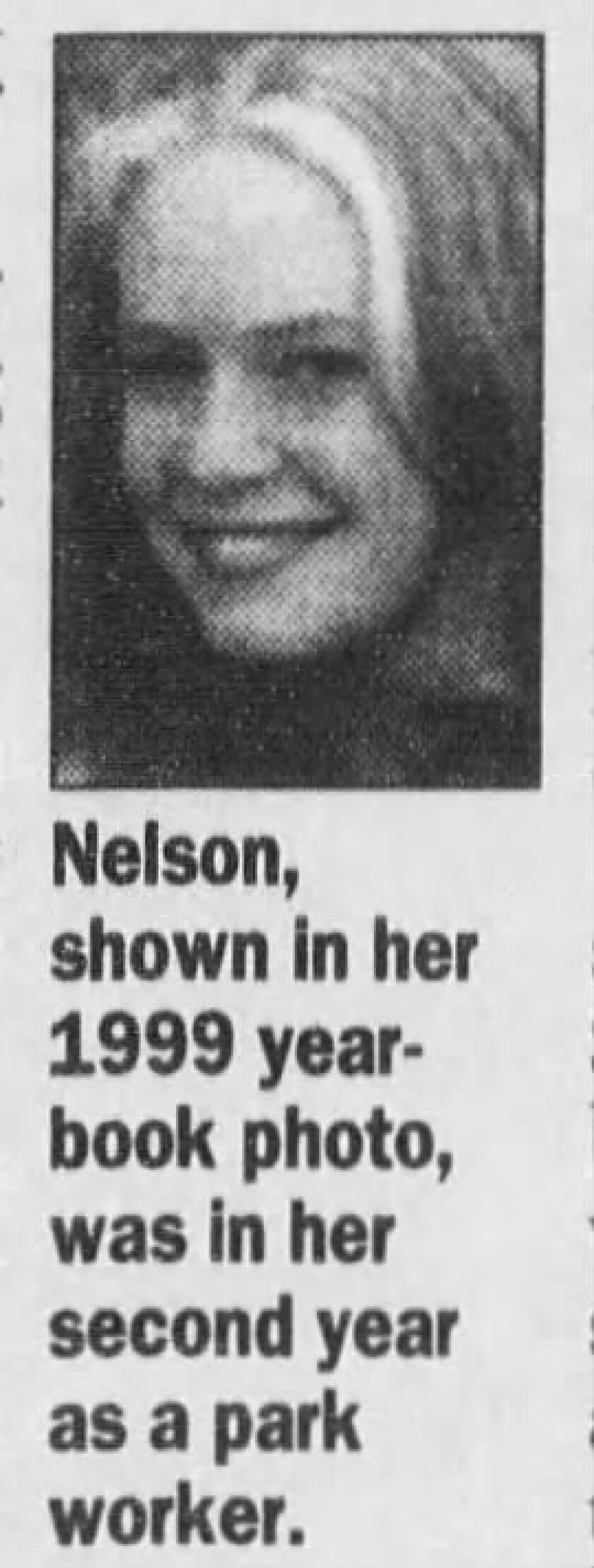LUVERNE, Minnesota — Carrie Nelson’s slaying remained a mystery for years before a DNA hit led to justice.
Nelson was 20 years old when her body was discovered inside Minnesota’s Blue Mounds State Park office on May 20, 2001. She had been bludgeoned to death and left to die in an apparent robbery, marking the first death in more than 110 years in a Minnesota state park.
ADVERTISEMENT
In the months and years following Nelson’s death, more than 500 tips were called in to the Luverne Police Department, the agency handling the case. Each tip led investigators to a dead end — until new DNA samples led to a match in the South Dakota offender database.
In May of 2007, Randy Swaney was charged in the murder of Nelson after his DNA was discovered on a watch left at the scene of the crime. More than one year later, he was convicted and sentenced to life in prison, without parole.
In broad daylight
At around 2:30 p.m., roughly an hour before shift change, campers noticed a white car speeding away from the Blue Mounds State Park office building.

Moments later, another vehicle pulled up to the office building to purchase a permit. The driver, Marion Brady, assumed the park worker would come out to issue the permit, yet went inside after waiting for quite some time, according to court documents.
When Brady opened the door, she saw one young woman lying on the ground — and another running out the door.
The woman fleeing from the office was Nelson’s new coworker, Rebecca White, who had been training with Nelson that morning.
White was staying with her parents that day at the campground. After hearing the white car speed away, she went to check on Nelson.
ADVERTISEMENT
That’s when she discovered Nelson on the ground, unresponsive, behind the customer service desk, in a pool of blood. Next to Nelson, she saw broken objects and a pack of cigarettes, according to court documents.
In a panic, White ran out the door to seek help. Marion did the same.
White’s father rushed to the office and called 911, prompting a swarm of officers to arrive on the scene — and the search for Nelson’s killer began.
Honing in on clues
Nelson put up a fight.
In what investigators determined to be a robbery gone wrong, Nelson found herself in the wrong place at the wrong time.
The crime scene led investigators to believe Nelson fought back against her assailant, signs of a struggle were everywhere. A dangling phone receiver and a trail of blood indicated she likely tried to escape and call for help.
Yet, in the end, she was overpowered. Roughly $2,000 was taken from the scene, along with checks and 12-pound engraved decorative rock.
ADVERTISEMENT
In the midst of the struggle, though, the assailant left behind plenty of clues. Most notably, a pack of Doral 100 cigarettes and a somewhat rare wristwatch.
Investigators with the Minnesota Bureau of Criminal Apprehension (BCA) swept the scene for fingerprints. While most matched Nelson's, investigators discovered fingerprints on the wristwatch that did not match the DNA profile of Nelson or her coworkers.
The stolen 12-pound rock was discovered on the side of the road near the campground. Investigators determined it to be the murder weapon, which the assailant used to hit Nelson in the head.
The items and fingerprints left at the scene, along with eyewitness accounts of a large white car speeding away, gave investigators hope that they’d find the killer.
Yet that wouldn’t happen until roughly six years later, when new DNA technology yielded new samples.
Finally, a trial
While DNA samples had been collected on the watch in 2001, technological advancements allowed investigators to build out an even more detailed DNA profile in 2006, which included new samples previously undetected on the watch’s wristband.

The new samples were checked against Minnesota’s database, yet yielded no results. Next, investigators expanded their database to outside states, and in April 2007, they discovered a match in South Dakota's offender registry.
ADVERTISEMENT
One month later, Swaney was charged for Nelson’s murder. He was serving time at South Dakota State Penitentiary in Sioux Falls, South Dakota, on an unrelated conviction at the time.
During his trial, prosecutors presented family pictures of Swaney with Doral 100 cigarettes and images of Swaney wearing a watch similar to the one discovered at the scene, which included his DNA.
Experts testified that the DNA match yielded more than 99% certainty that it belonged to Swaney.
Prosecutors also presented the jury with evidence that Swaney and his wife owned a cream-colored 1984 Oldsmobile at the time of Nelson’s slaying — a vehicle consistent with eyewitness accounts from those who witnessed a white vehicle leaving the scene.
One inmate who served time alongside Swaney in South Dakota testified that Swaney had provided details about Nelson’s murder, including his fear that his DNA could be found on a watch a woman had ripped off his wrist during the struggle, according to court documents.
The defense attempted to cast doubt on the evidence — and divert the blame to another possible suspect.
On the stand, Swaney said he struggled with gambling and alcohol addictions at the time of Nelson’s death. He claimed he could have visited the campground to check rates for a family vacation.
ADVERTISEMENT
“After looking at everything, it looks like I had been there and just don’t remember,” he said on the stand, according to an Associated Press article from the time. “We are always looking for new parks to experience.”
Still, Nelson was convicted and sentenced to life in prison, without parole.
The jury deliberated for just six hours before delivering a guilty verdict.
Following the verdict, Nelson's parents described, in part, the anguish their daughter's murder had caused the family.
"My security, happiness and trust that all will be well is gone," Nelson's mother, Nan Kaufenberg, told the Associated Press.
Following the verdict, Swaney maintained his innocence. He is serving his life sentence at Minnesota’s Oak Park Heights Correctional Facility.























